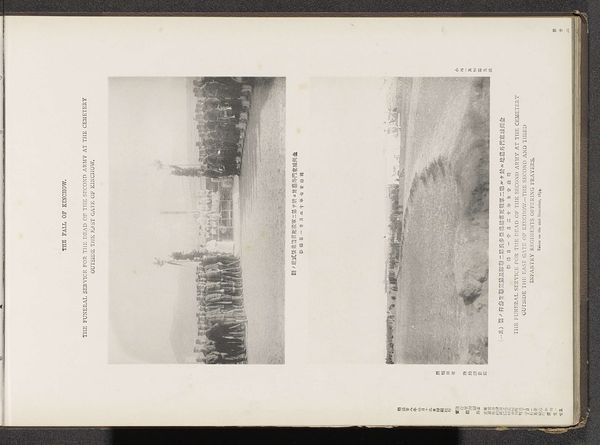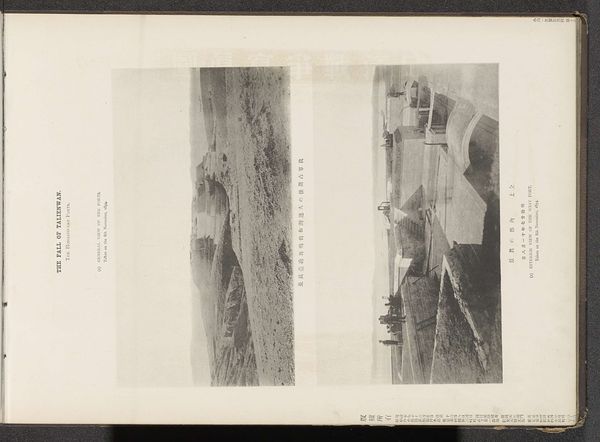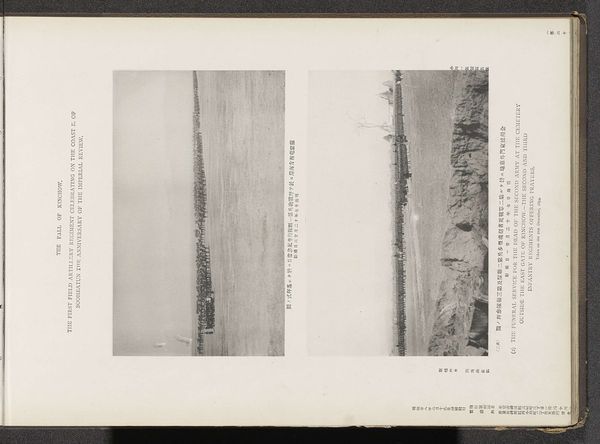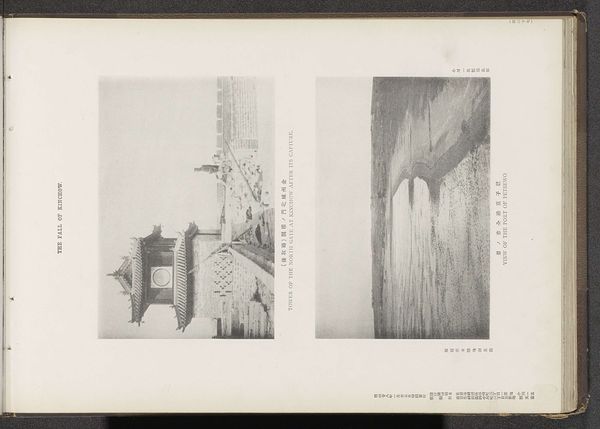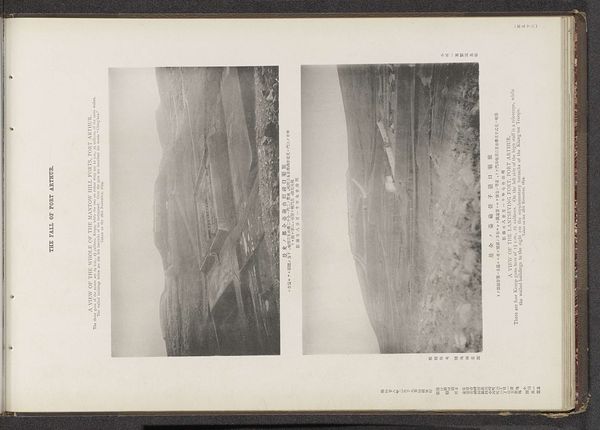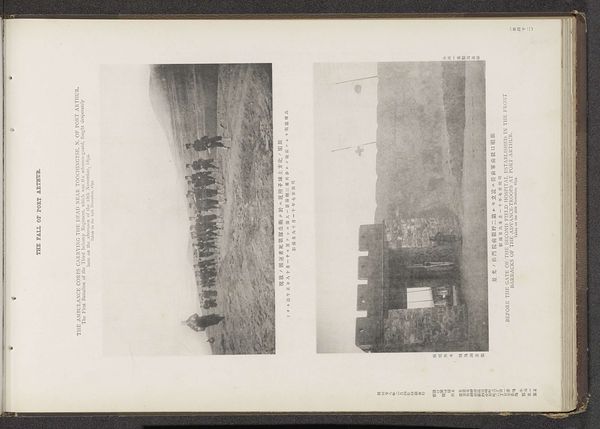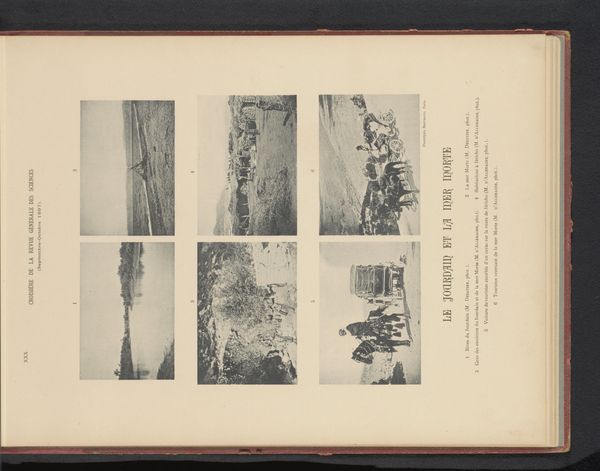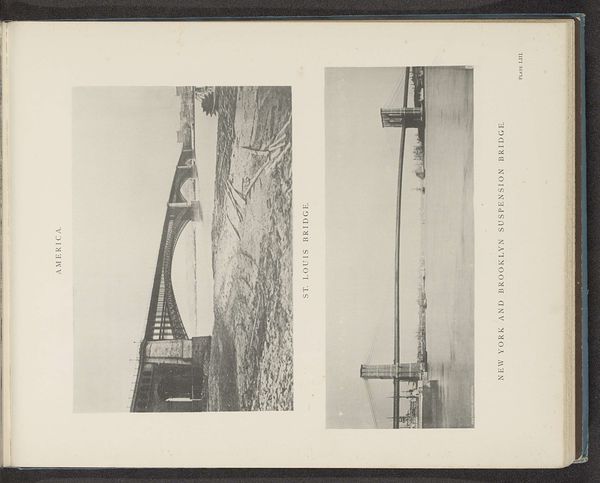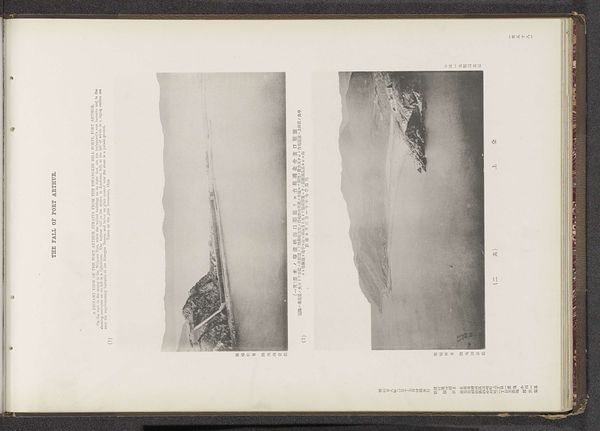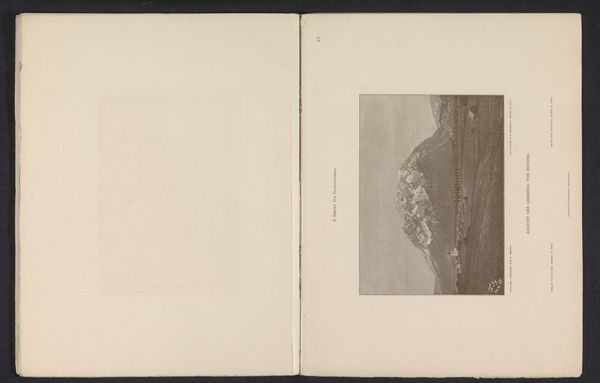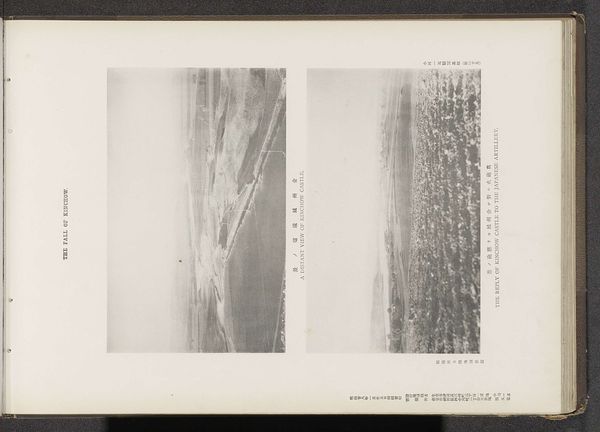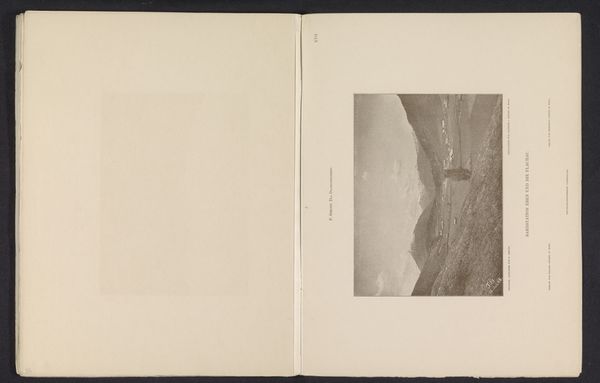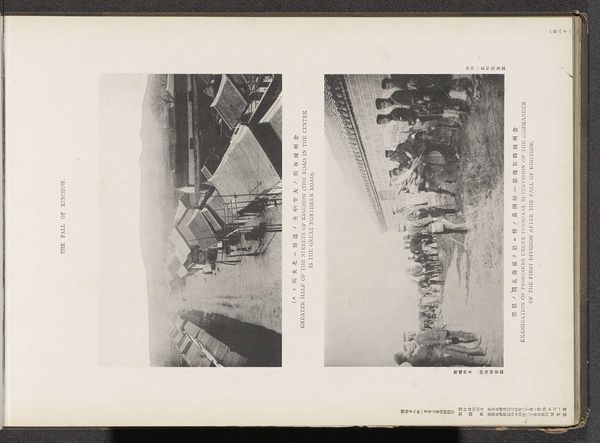
print, photography
# print
#
asian-art
#
landscape
#
river
#
photography
#
realism
Dimensions: height 426 mm, width 195 mm
Copyright: Rijks Museum: Open Domain
Curator: So, here we have "Twee gezichten op de Yalu-rivier te Korea", or, “Two Views of the Yalu River in Korea.” The image is a print, reproduced from a photograph taken by the Ordnance Survey Office sometime before 1899. It showcases two contrasting perspectives of the river. Editor: My first thought? Stark. Utilitarian. Almost…clinical. Not exactly a landscape painting meant to evoke a feeling so much as a record. I notice how drained of color everything is. Even the distant hills look flat. Curator: It’s realism bordering on documentarian, wouldn't you say? The photos are direct, revealing how infrastructure can transform natural settings for military purposes. The military bridge on the left looms heavily, contrasted with a distant view, perhaps demonstrating tactical oversight from an elevated vantage point on the right. Editor: It certainly captures that feeling, like this isn’t about beauty but about strategic placement. It does make me wonder what life along that river would have been like. Are those humble dwellings, strategically placed to control access, perhaps? Curator: Absolutely. You see the visual power struggle. A beautiful scene becomes terrain, space, subject to claim. Note how in one image you see the bridge extending limitlessly on a long exposure photo with low contrast and in another photo you see rural life with very rough rendering on an off-axis angle. The lack of romanticism suggests political motivations; this wasn't created to evoke emotions but convey information, enforce power dynamics in occupied territory. Editor: Exactly. It shows more than geography. And maybe that’s its strange power. It gives us glimpses into history with quiet directness. It is a window. Curator: Precisely. This seemingly simple topographical rendering evokes an abundance of insights, when placed against the timeline and cultural context from that era. Editor: A stern reminder to view the familiar in a different way, and what seemed plain gains intensity and importance.
Comments
No comments
Be the first to comment and join the conversation on the ultimate creative platform.
